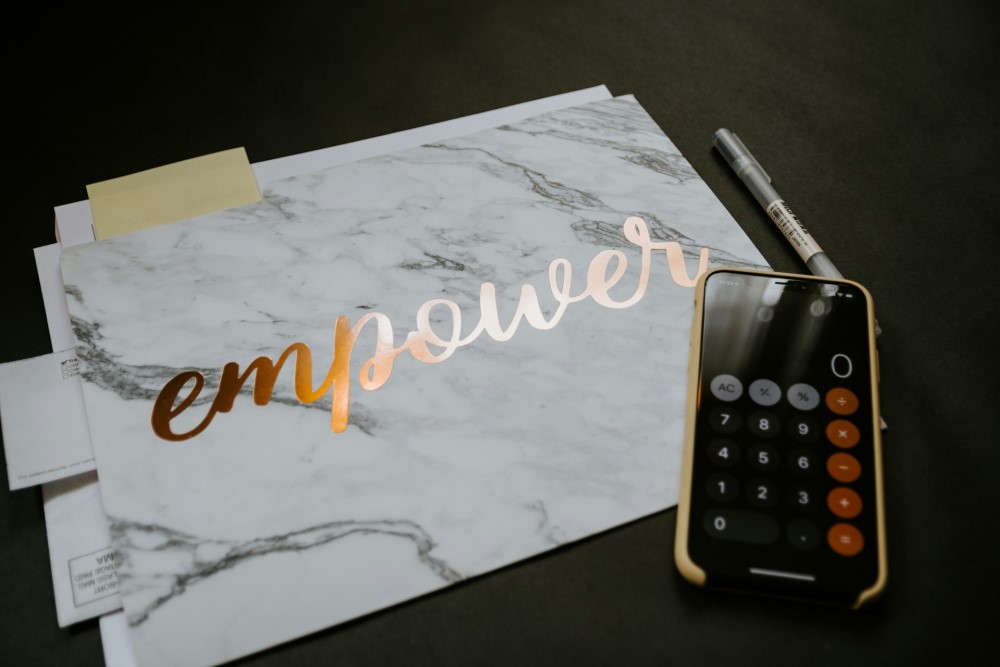
How to Plan an Office Party That Boosts Employee Morale
In the dynamic landscape of modern workplaces, fostering a positive work environment isn’t just a nicety; it’s a strategic imperative. Among the myriad of strategies aimed at enhancing employee retention, engagement and productivity, one often overlooked yet highly effective method stands out: the office party that boosts employee morale. Beyond being merely a social gathering, a well-planned office party can serve as a powerful tool for bolstering team spirit, nurturing camaraderie, and reinvigorating morale within an organization.
In recent years, the traditional perception of office parties as frivolous distractions has undergone a significant transformation. Companies, both large and small, have come to recognize the immense value that well-executed social events can bring to the workplace. Far from being frivolous, these gatherings serve as essential platforms for fostering connections, building relationships, and strengthening the fabric of organizational culture.
At the heart of any successful office party lies its ability to promote a sense of belonging and community among employees. In an era characterized by remote work and digital communication, face-to-face interactions are more precious than ever. The office party provides a rare opportunity for colleagues to come together in a relaxed setting, free from the constraints of work-related stressors, and forge meaningful connections beyond their professional roles.
Moreover, the positive impact of office parties extends far beyond the duration of the event itself. Studies have shown that employees who feel a strong sense of belonging and camaraderie at work are more likely to be motivated, engaged, and productive. By investing in morale-boosting activities such as office parties, organizations can create a virtuous cycle wherein happy employees contribute to a positive work environment, which in turn reinforces employee satisfaction and loyalty.
Furthermore, office parties offer an ideal platform for recognizing and celebrating the contributions of employees. Whether it’s acknowledging milestones, achievements, or simply expressing gratitude for hard work, these events provide a tangible demonstration of appreciation from management, fostering a culture of recognition and appreciation within the organization.
In this article, we delve into the myriad benefits of hosting an office party that boosts employee morale. From fostering a sense of community to enhancing employee engagement and productivity, we explore how organizations can leverage social events to cultivate a happier, more cohesive workplace culture. By understanding the transformative potential of office parties, companies can unlock new avenues for enhancing employee satisfaction, retention, and overall organizational success.
Choosing the Right Date and Time for an Office Party That Boosts Employee Morale

Choosing the correct date and time for your office party is of utmost importance to ensure maximum attendance and active participation. In order to make the best decision, please follow these steps:
1. Consider the work schedule: It is vital to take into account your colleagues’ workload and project deadlines. Make sure to avoid planning the party during busy periods or high-pressure times.
2. Coordinate with key participants: Check the availability of managers or senior employees and coordinate the date and time accordingly to ensure their presence.
3. Keep the purpose of the party in mind: If the goal is to reward and appreciate your colleagues, schedule the event towards the end of the working day or workweek. If the aim is to enhance team bonding, plan the party during office hours to maximize participation.
4. Be mindful of cultural and religious holidays: Take into consideration major holidays or cultural observances that may impact attendance. Show respect for diversity and ensure that nobody is excluded due to religious or cultural commitments.
5. Survey your employees: Send a simple poll or survey to gauge the preferences of your colleagues. This will assist you in selecting a date and time that works best for the majority.
By following these steps, you will be able to make an informed decision about the most suitable date and time for your office party. Remember that open communication and flexibility are crucial in accommodating everyone’s needs and ensuring a successful event.
Select a Suitable Theme
When organizing a corporate gathering, it is essential to choose an appropriate theme that will create a delightful and engaging atmosphere for the staff members. Selecting a well-suited theme can promote active participation and foster a sense of unity among the employees. Here are some suggestions:
1. Bygone Eras: Take your colleagues on a nostalgic journey by choosing a specific decade as the theme. Encourage everyone to dress up in the fashion of that time period and play music from that era.
2. Superheroes: Allow your team to unleash their inner superheroes. Encourage employees to come dressed as their favorite superheroes and decorate the venue with superhero-themed decorations.
3. Tropical Paradise: Bring the beach to your office by creating a tropical paradise setting. Use vibrant decorations, serve refreshing cocktails with fruits, and play lively music.
4. Casino Night: Create an evening of excitement and elegance by transforming your office into a casino. Set up gaming stations, provide play money, and offer prizes for winners.
5. Carnival: Embrace the festive spirit by organizing a carnival-themed party. Arrange game booths, serve traditional treats like popcorn and candyfloss, and encourage employees to come dressed in costumes.
When considering a theme, take into account the preferences and interests of your employees. Opt for a theme that appeals to a wide range of individuals. Be mindful of any cultural sensitivities or preferences. By selecting a suitable theme, you ensure that the office party will be a memorable and enjoyable experience for everyone involved.
Set a Realistic Budget

Setting a realistic budget is crucial when planning an office party. Here are some steps to consider:
1. Assess financial resources: Take a close look at the overall budget and determine the specific amount that can be allocated for the office party.
2. Establish priorities: Identify which aspects of the party are of utmost importance. These may include the venue, catering, entertainment, decorations, or gifts.
3. Research costs: Find out the prices for vendors, venues, and services to estimate the cost for each item on the party checklist.
4. Consider alternatives: If certain elements of the party exceed the budget, explore cost-effective options that can still achieve the desired objectives.
5. Be realistic: Set a budget that aligns with the financial limitations. Remember to consider other expenses the team may have throughout the year and avoid overspending.
In 2017, a company organized an office party without a realistic budget. They excessively spent on a luxurious venue, expensive decorations, and gourmet catering. They neglected to consider the cost of entertainment and ended up settling for a low-quality DJ at the last minute. This not only surpassed their budget but also left the employees disappointed with the subpar entertainment. This experience taught the company the significance of setting a realistic budget and considering all aspects of the party to ensure a memorable and enjoyable event for everyone.
Assign Organizing Responsibilities
When planning an office party, it is crucial to assign organizing responsibilities for a successful event. Follow these steps to effectively allocate and manage responsibilities:
- Identify key tasks: Create a list of tasks required for the party, such as selecting a venue, arranging catering, organizing decorations, planning entertainment, and sending out invitations.
- Delegate responsibilities: Assign tasks to responsible individuals or teams, taking into account their skills, interests, and availability. Distribute the workload evenly.
- Provide clear instructions: Clearly communicate expectations and requirements for each task, including deadlines, budgets, and any preferences.
- Establish regular check-ins: Arrange meetings or send emails to monitor task progress, allowing for clarification, problem-solving, and ensuring everyone is on track.
- Encourage collaboration: Promote a collaborative environment where team members can support and assist each other. Encourage open communication and collaboration between different teams or individuals.
- Offer support: Be available to answer questions, provide guidance, and offer support as necessary. Ensure that team members have the necessary resources and information.
- Review and provide feedback: After completing each task, provide constructive feedback to individuals or teams. Recognize their efforts and achievements to motivate them for future responsibilities.
Assigning organizing responsibilities in an office party helps distribute the workload, ensure efficiency, and promote teamwork. It allows everyone to contribute their skills and expertise, leading to a well-executed and enjoyable event.
Fact: Effective delegation improves employee engagement and satisfaction by enabling individuals to take ownership and showcase their abilities.
Create a Guest List

Creating a guest list is crucial when organizing a corporate event. It is important to create a comfortable atmosphere and ensure that the appropriate individuals are invited. To create a guest list, follow these steps:
- Determine the purpose of the event: Recognize whether it is a team-building activity, a celebration of accomplishments, or a holiday gathering. This will help decide who should be invited.
- Consider the size of the venue: Take into account the venue’s capacity when compiling the guest list. Make sure that the number of invitees is manageable and can comfortably fit in the space.
- Seek input from colleagues: Consult with colleagues and team members to ensure that all relevant individuals are included and everyone feels involved.
- Avoid potential conflicts: Be mindful of office conflicts or tensions and refrain from inviting individuals who may not get along. The goal is to create a positive and enjoyable experience for all participants.
- Incorporate a variety of roles: Invite individuals from different departments, seniority levels, and job functions. This encourages networking and interaction among colleagues who may not have the opportunity to connect.
Decide on a Venue
When planning an office party, choosing a venue is crucial in order to have a successful and enjoyable event. Here are some steps to consider:
1. Assess the size of your guest list and select a venue that can comfortably accommodate everyone. Take into account the venue’s capacity, layout, and available seating options.
2. Take into consideration the venue’s location. Is it easily accessible for all employees? Does it have sufficient parking or nearby public transportation?
3. Determine the atmosphere you wish to create. Do you prefer a formal setting or a more casual and relaxed environment? Choose a venue that aligns with the overall vibe of the party.
4. Consider the amenities and facilities the venue provides. Does it have a kitchen or catering services if you plan to serve food? Are there audiovisual equipment and a sound system available for planned speeches or presentations?
5. Take your budget into consideration. Compare the costs of different venues and select one that fits within your budget while still offering the necessary features and ambiance.
Plan the Food and Drinks

To plan the food and drinks for an office celebration, follow these steps:
1. Establish a budget for catering or purchasing items to determine how much you will allocate.
2. Take into account any dietary restrictions or preferences of the employees. Note down any allergies or food limitations to ensure that everyone can enjoy the food.
3. Provide a variety of options that cater to different preferences. Include vegetarian, vegan, and meat dishes.
4. Plan a well-rounded menu by including starters, main courses, side dishes, and desserts to offer a range of tastes and textures.
5. Choose drinks that cater to everyone. Offer both alcoholic and non-alcoholic beverages such as water, fizzy drinks, juice, and alcoholic cocktails or beer.
6. Consider the theme or purpose of the office celebration. For a formal event, consider a seated dinner with a set menu. For a casual gathering, think about a buffet-style arrangement with more choices.
7. Arrange for catering or delegate responsibilities. Provide the caterers with the menu requirements and instructions or assign tasks to team members if organizing in-house.
8. Ensure that the food and drinks are presented attractively using platters, serving dishes, and drink stations that align with the theme or style of the celebration.
9. Consider sustainability by using eco-friendly plates, cups, and cutlery to minimize waste.
10. Inform the employees about the menu in advance. Share the details of the food and drinks, including any special instructions or requests.
Organize Fun Activities and Entertainment
Organizing fun activities and entertainment is essential for boosting morale and creating an enjoyable atmosphere at an office party. Here are some ideas to consider:
- Integrate team-building games and challenges to encourage collaboration and camaraderie among colleagues. Activities such as escape rooms, scavenger hunts, or friendly sports competitions can foster teamwork and create a pleasant environment.
- Arrange interactive workshops or courses where employees can have a good time while learning something new. Options might include cooking classes, painting workshops, or dance lessons.
- Employ professional entertainers like comedians, magicians, or musicians to add excitement and laughter. Live performances can create a vibrant and enjoyable ambiance.
- Include photo booths or themed dress-up areas to encourage socializing and capture memorable moments. Props and accessories can add an extra element of fun and allow employees to showcase their creativity and personalities.
- Coordinate contests or competitions, such as talent shows or karaoke battles. These activities provide opportunities for employees to display their talents, bring out their competitive spirit, and create a lively and entertaining atmosphere.
Remember, the goal is to cater to different interests and preferences, ensuring that everyone can participate and enjoy. By incorporating these elements, you can organize an office party that enhances employee morale and cultivates a positive work environment. Plan an unforgettable celebration for your team!
Think about Decorations and Ambiance

When planning a work gathering, it is crucial to carefully think about the decorations and atmosphere in order to establish a positive environment for employees. Here are some essential factors to consider:
- Think about a theme: Selecting a theme helps to set the mood and creates a cohesive appearance. It also adds to the overall ambiance.
- Strategically decorate: Use decorations that coordinate with the theme and place them strategically throughout the venue. This can include balloons, banners, table centrepieces, and lighting.
- Pay attention to color schemes: Colors have the ability to evoke specific moods and emotions. Consider the desired ambiance. Vibrant and bold colors can create a lively feel, while soft and muted tones provide a calm atmosphere.
- Create designated areas: Arrange furniture to create spaces for different activities and relaxation. Include a dance floor or game area and provide comfortable seating for conversations and socializing.
- Consider background music: Choose fitting music that complements the party theme and desired ambiance. Ambient music, uplifting tunes, or even a live band can contribute to a celebratory environment.
By carefully considering the decorations and ambiance, you can boost employee morale and create a memorable office party experience for all participants.
Acknowledge and Include Different Preferences
Acknowledging and including different preferences is paramount when organizing an office party. It is crucial to ensure that everyone feels valued and included. Here’s how you can achieve this:
1. Take into account dietary restrictions: Acknowledge the needs of vegetarians, vegans, those who are gluten-free, and individuals with allergies. Provide a wide range of food options to accommodate these preferences and guarantee that everyone can fully enjoy the party without any concerns.
2. Consider cultural diversity: Keep in mind the diverse backgrounds and cultures present in the office. Incorporate elements from various cultures into the party, such as music, decorations, or games. This showcases inclusivity and makes everyone feel represented.
3. Offer choices of activities: Provide a variety of options, including team games, karaoke, or quiet spaces for those who prefer a more relaxed atmosphere. This allows employees to engage in activities they enjoy and contributes to making the party enjoyable for everyone.
4. Respect personal preferences: Some individuals may prefer not to participate in certain activities like dancing or loud games. Provide alternative options or opportunities for employees to opt-out if they prefer a different experience.
5. Seek feedback: Prior to planning the party, ask employees for their opinions and suggestions. Incorporate their ideas into the party planning to tailor it more closely to their preferences.
Remember that the key objective is to create an inclusive and enjoyable experience for all employees. By acknowledging and including different preferences, you cultivate a positive and inclusive office culture that enhances employee morale.
Communicate the Details to Employees

When planning an office party, it is necessary to effectively communicate the details to employees for the event’s success. Here are the steps to follow:
1. Issue a save the date: Notify employees well in advance, enabling them to plan accordingly.
2. Provide event information: Clearly communicate the date, time, and location of the party, along with any specific details like the theme or dress code.
3. Outline the agenda: Inform employees about the activities or entertainment planned for the party, generating excitement and anticipation.
4. Highlight any special features: Inform employees about guest speakers, awards ceremonies, or team-building activities to ensure they are aware of these highlights.
5. Specify food preferences or restrictions: Inquire about dietary restrictions or preferences to ensure everyone can enjoy the refreshments provided.
6. Encourage participation: Inform employees about opportunities for them to contribute, such as bringing a dish or participating in a talent show.
7. Allow for feedback: Provide a contact person or platform for employees to ask questions or provide input about the party.
In 2018, our company organized an office party to celebrate a successful project. We promptly communicated all the details to employees, including the date, time, and venue. We also announced the awards ceremony to acknowledge exceptional team members. Employees were thrilled and appreciated knowing the agenda ahead of time. We took into account food preferences and restrictions, ensuring a variety of options for everyone. The party was a resounding success, with a high employee turnout and positive feedback. Effective communication of the details allowed us to create a memorable and enjoyable experience for all.
Follow Up with Employee Feedback
Following up with employee feedback is crucial for planning an office party that enhances employee morale. This step allows you to assess the success of the event and identify areas for improvement.
To effectively follow up with employee feedback, please consider the following suggestions:
1. Conduct a survey: After the office party, send a concise and straightforward survey to all employees to gather their thoughts and opinions on key aspects such as the venue, activities, food, and overall atmosphere.
2. Analyse the feedback: Once the survey responses have been collected, carefully analyse the feedback provided by employees. Look for common themes or concerns and prioritize addressing those areas in future events.
3. Act on constructive feedback: Take action based on the feedback received. Implement changes if employees have suggested improvements, such as more interactive games or a different type of cuisine.
4. Communicate the results: Share a summary of the feedback with the employees to demonstrate that their opinions and input are valued. Be transparent about any changes or improvements that will be implemented based on their feedback.
5. Foster an ongoing discussion: Encourage employees to provide continuous feedback and suggestions for future office parties. This can be done through suggestion boxes, regular meetings, or an online platform dedicated to gathering employee suggestions and ideas.
Following up with employee feedback ensures that their voices are heard and helps create a more enjoyable and engaging office party experience. By taking their suggestions into account, you can continuously enhance the potential of future events to boost morale.
How to Boost Employee Morale with an Office Party?

To boost employee morale with an office party, follow these guidelines:
- Start by making arrangements for the celebration. Choose a date, time, and venue that align with employee preferences. Consider incorporating fun themes or activities.
- Create a joyful ambiance by decorating the workplace with lively decorations, balloons, and banners.
- Provide delicious food and beverages. Organize a variety of food options to cater to different dietary preferences. Offer non-alcoholic drinks.
- Organize engaging team-building activities such as team games, trivia contests, or friendly competitions.
- Take advantage of the workplace celebration to recognize and reward employees’ hard work and accomplishments. Consider presenting awards or certificates.





